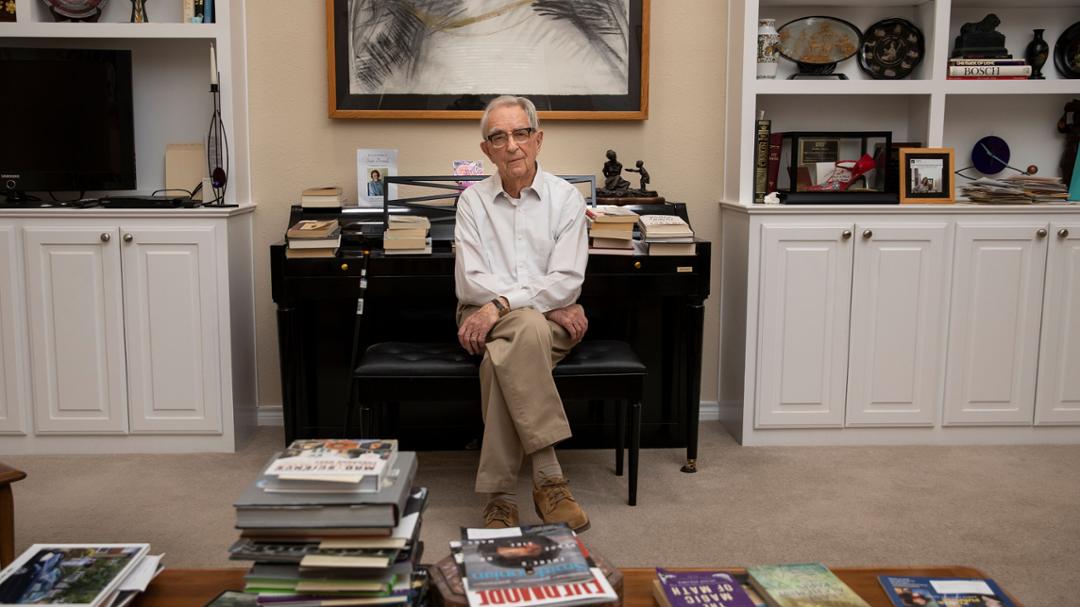Young Henry Shine knew nothing of higher education. A century later he reflected on how it became his life.
This article originally appeared on Texas Tech Today in Feb. 2023 as a celebration of Henry Shine's 100th birthday. Shine passed away in June 2024, but his impact will be felt at Texas Tech for generations to come.
If you don't know the name Henry J. Shine, you're not alone.
“The university, as a whole, is unaware that I exist,” Shine says, matter-of-factly. “The president of the university is well aware, and the provost and the dean and the department, and the Southwest Collection, but as for the rest of the university, I probably don't exist. That's the way of life.”
It doesn't particularly concern him. After all, the 100-year-old has been retired from Texas Tech University for longer than most undergraduate students have been alive. But even so, his contributions during his 44 years at the university – as well as those in the 25 years since – are undoubtedly worth remembering.
You see, Shine came to higher education in a most unlikely way, arrived at Texas Tech by chance and made it his home. He made discoveries that put Texas Tech, his students and himself on the map; for that work, he was named one of the earliest Horn Professors at the university. He played important roles in some of the university's biggest turning points of the last half-century. And now, even decades after stepping away from the classroom, Shine is still helping future generations of scientists follow in his footsteps.
So, Red Raiders, here is your long-overdue reintroduction to Henry Shine.
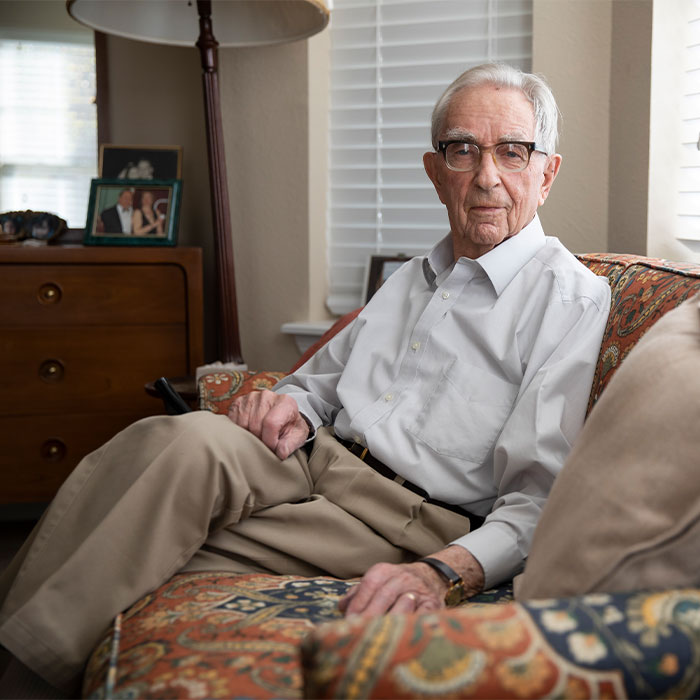
A Stranger to Education
Texas Technological College was founded on Feb. 10, 1923. On the other side of the globe, Shine was already a month old.
Born in January 1923 in London's predominantly Jewish East End, Shine was one of four children in a decidedly working-class family. They lived in a tenement-style row house, and he attended Stepney Jewish Boys School.
At the time, it was customary for children to take an examination at age 11 to determine their educational future. Students who scored well continued into central and possibly even secondary school; students who did not left education at age 14 to start working. Shine performed well enough to earn a place in central school.
At age 13, he and his family moved to London's West End, a more sophisticated area near the theater district. He enrolled at Lyulph Stanley Central School, where he learned to work with his hands, probably training for low-level technical positions. However, a particularly wise teacher there, Mr. Taylor, saw more potential in Shine and a few other students.
He singled out five to teach privately with a tougher curriculum. Shine ruefully gave up metalworking and woodworking – two of his favorite classes – to instead study mathematics, German, chemistry and physics.
He was probably well on his way to a future in higher education – except that he was totally unaware of that path. With his blue-collar background, Shine didn't know anything about college; to him, Oxford and Cambridge was an annual boat race on the River Thames. His life experiences to that point had shown him only one option: working to earn a living. And, as a 15-year-old, he had already passed the age at which he should have started working. So, in 1938, Shine left school.
An Unlikely Route
Using his mathematical prowess and fluency in German, Shine became a bookkeeping clerk, first for a Romanian company that dealt in imports and exports and, later, for the Warner Bros. and First National film studios. He spent hours upon hours calculating long columns of numbers to determine the amount of rental money theaters owed to the film studios. He added up the pence and divided by 12 to convert to shillings, added the shillings and divided by 20 to convert to pounds – all without a calculator.
Then, on Sept. 1, 1939, Germany invaded Poland. Two days later, Britain declared war against Germany, effectively beginning World War II. That very day, Shine's family moved to what they thought would be a safer location: a peaceful suburb 17 miles upriver, Sunbury-on-Thames. He commuted in and out of the city each workday until the German bombings of London caused Warner Bros. to flee to the outskirts as well.
However, when the bombings became so commonplace they lost their ability to terrorize the Britons, Warner Bros. moved back to London. Unwilling to go back to commuting, Shine instead went to the Labor Exchange to seek a new job. There he learned about an opening for a routine analytical chemist – a low-level chemistry job he was ideally situated for because of his training at Lyulph Stanley.
So, he went to work for Maclean's, a pharmaceutical company that made toothpaste, analyzing the raw materials going into toothpaste and cosmetics. That led him into a similar position with the Pears soapmaking company, assessing the amounts of fatty acids in their products.
“It was nothing great in the way of chemistry,” Shine noted, “but I just loved that work.”
In those labs, he encountered other young chemists who were taking classes at night toward an Intermediate B.Sc. Certificate, essentially the first half of a bachelor's degree in chemistry. His curiosity piqued, and still completely unaware the program was part of a college curriculum, Shine enrolled.
Working days and taking classes at night, he progressed toward the exams that culminated the certificate program. Then, in January 1941, he turned 18 and his draft notice arrived in the mail.
So close to achieving his goal, Shine applied for a deferment of six months, hoping he could finish the program before joining the army. In response, he was summoned to the University of London Senate House. A group of fearsome-looking men dressed in suits sat around a huge, oval table. Why, they asked, did he want to delay his service to his country?
When he explained the situation, they caught him completely off guard. They allowed him the desired six months to finish the certificate on one condition: that he would go to the university an additional two years to finish a bachelor's degree.
“I was astonished,” he recalled. “I didn't know what ‘going to the university' meant. It meant, in fact, leaving work and going to a university, of which I was quite unaware.
“But I did it.”
Finding a Job
He was accepted into the highly regarded chemistry department at University College, part of the University of London system, and began classes in 1942. The college, however, was not in London at the time. Because of the bombings, it had been relocated to the University College of Wales campus in the seaside resort town of Aberystwyth on the coast of Wales.
Unlike college curriculums in the U.S., under the British university system, students take courses only related to their degree area. So, Shine's program didn't include humanities or language courses – he took only chemistry and physics, and he excelled in them. In 1944, he graduated with a Bachelor of Science in chemistry and physics with first-class honors.
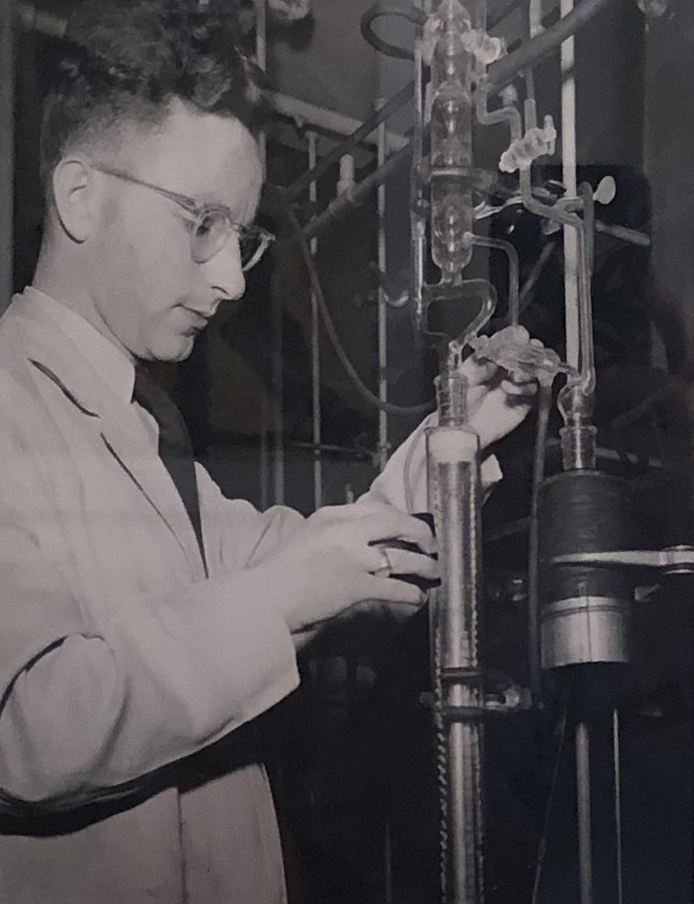
Then, true to his word, he went back to the draft board. When he thanked them for the time and said it was now his turn to join up, they surprised him yet again.
“No,” they said. “We did not allow you to go to the university and get a first-class degree in chemistry to serve in the army. We want you to find a job in chemistry.”
There was a likely explanation.
“In World War I, the first people to volunteer for the army were the university people, and they were wiped out,” Shine explained. “So, Great Britain did not want to wipe out another generation of scientists.”
Whatever the reason for their order, Shine did as he was told.
He had been offered a position doing research at University College with Christopher Ingold and Edward Hughes, two of the most famous organic chemists in the world. But, thinking he needed to get to work and earn a living, he turned them down.
He also turned down an offer from a company called Tube Alloys after visiting their site and deciding he didn't like it. He later found out Tube Alloys was a cover name for the British efforts in atomic energy.
Instead, he found a job studying lubricating oils in the labs of Shell Oil Company in the nearby town of Hook. He was thoroughly bored and, within six months, went back to Ingold and Hughes to see if the research position was still available.
It was not. But, they said, Professor E.E. Turner needed a research assistant for a wartime project he was working on. After discussing the project, Turner offered Shine the position, and Shine joined him at Bedford College for Women, situated in London's beautiful Regent's Park. Shine turned his research work into a doctorate in 1947.
“I had noticed that, with a particular reaction I was employing, the Grignard reaction, strange things would happen on certain occasions, and I wanted to find out why that was,” Shine said. “So, that's what I did for three years at Bedford College. I never did find out what happened, but it led me to the U.S.”
Coming to America
After earning his doctorate, Shine wanted to continue his investigation of the Grignard reaction, so he applied to conduct postdoctoral research with Frank Whitmore at Penn State University, a leader in organometallic chemistry whose work Shine had read frequently. But after learning of Whitmore's death a month later, Shine applied instead to another well-known researcher, Henry Gilman at Iowa State College in Ames, Iowa.
Gilman later became known as the father of organometallic chemistry.
“He welcomed me to come and do research there, and he was going to pay my way as a research fellow,” Shine said. “And that's how I got to America.”
Shine arrived in January 1948, while Gilman was away having retinal surgery. When Gilman returned, he was partly blind.
“He asked me, as a postdoctoral fellow, to look after his organic graduate student labs,” Shine recalled. “He had 20 students, and this was my first training in how to listen to and respond to graduate students.”
But Shine soon realized checking on and advising 20 graduate students, and then reporting back to Gilman at his home every night, left precious little time to conduct research.
“I found that so burdensome, so time-consuming, that I couldn't do any work,” he said.
Although Gilman reluctantly agreed when Shine told him he could no longer oversee the graduate students, Shine still found himself taking care of things in Gilman's absence, even cleaning out cupboards under the benches in the research labs that were cluttered with bottles of chemicals and old-fashioned non-tapered glassware. Eventually, it came to a head.
“I couldn't do the research I wanted to do and look after Gilman's interests, so we parted,” Shine said. “He told me to go back to England; he was through with me.”
The head of the department, however, was not in agreement – especially after the only other organic chemist in the department, George Hammond, vouched for Shine. Shine agreed to teach one organic quiz section in exchange for full control of his own research. Little did he know then that quiz section would change the trajectory of his future work.
The Benzidine Rearrangement
In Hammond's lectures, students learned about chemical rearrangements, through which chemicals change their natures. One student in the quiz section asked Shine how the benzidine rearrangement took place.
The compound hydrazobenzene has two parts joined in the middle by two nitrogen atoms. In the presence of acids, the compound essentially turns itself inside out to be joined instead by two carbon atoms. Through this process, called the benzidine rearrangement, the hydrazobenzene is converted into benzidine.
This much they knew – but the student wanted to know exactly how it happened: the mechanisms and timing.
“Fortunately, I had enough sense to say, ‘I really don't know, but I will ask George Hammond. He will know,' because he'd come from Harvard,” Shine remembered.
But Hammond didn't know either. He suggested Shine read about it and present the information in a Tuesday evening seminar.
“I did some library research, and I found that nobody really knew, but there were famous people trying to find an answer,” Shine said. “One was my former teacher in England, Professor Ingold, and another was a professor in this country, Michael Dewar. They both had ideas but couldn't prove them.
“So, I had to tell George Hammond, the other research students and also the undergraduate who asked me, nobody really knew how this rearrangement took place.”
Hammond recommended that Shine should take up the search for an answer and first tackle what is known as the kinetic order in acid catalysis. Within two months, Shine had the answer: in contrast to a widespread assumption that only one proton was required to cause the rearrangement, it actually took two. This was the beginning of many years of research Shine revisited later at Texas Tech.
A Horatio Alger Story
Shine ultimately spent two years at Iowa State, followed by two years at the California Institute of Technology with Carl Niemann. At the end of those two years, he searched for another job in academia but came up empty handed. Instead, in the fall of 1951, he took an industry job in Passaic, New Jersey, working as a chemist for the United States Rubber Company.
Shine found an apartment in Ridgewood, New Jersey, but it was an area full of families and, for a single man, was quite lonely. So, when he wasn't working, Shine spent a lot of time in New York City. A friend from Gilman's lab named Irving Zarember had moved to Greenwich Village and lived in an apartment above a liquor store. That's where Shine met the captivating Sellie Schneider.
“She came with a friend to have dinner at Zarember's apartment,” he remembered. “We got to know each other, and I just fell for her. She came to dinner and we never parted.”
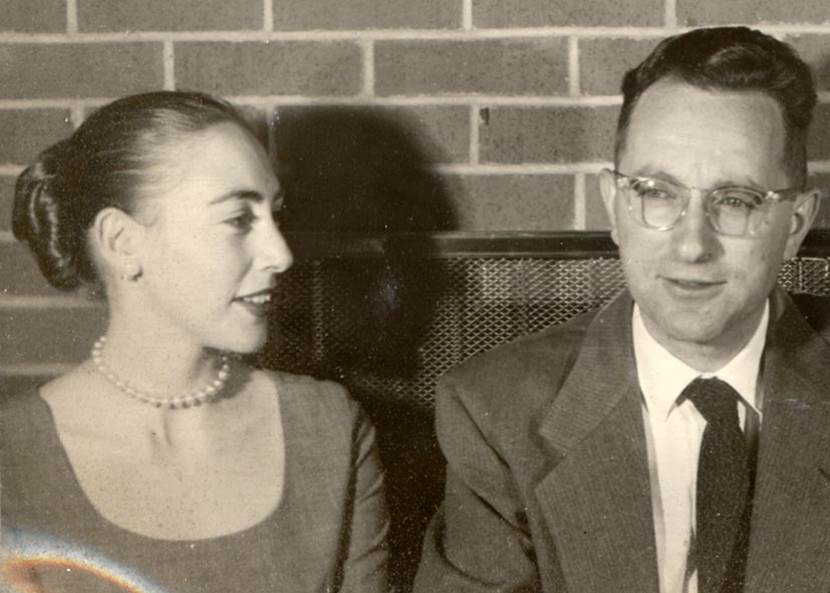
They were married in June 1953, but the bliss of Shine's marriage didn't extend into his work.
“I didn't enjoy the work for U.S. Rubber,” he explained. “I spent three years there, and they actually were very nice to me; they just let me do whatever I wanted. But, finally, they said, ‘Henry, you need to do some work to make money for us.' And that's when I said it was time for me to leave.”
At that time, most networking was done either through the convergence of research paths or by connecting at academic conferences. Recognizing that Shine's work was better suited to higher education than industry, his supervisors, Pliny O. Tawney and Bob Snyder, sent him to the 1954 American Chemical Society meeting in New York City. While there, Shine interviewed with someone from South Dakota State University, someone from one of the military academies and someone from Texas Tech – Professor William Moore Craig from Texas Tech's chemistry department.
During their interview, Craig said he regarded Shine as a sort of Horatio Alger story – a rags-to-riches narrative.
“I didn't know what he was talking about,” Shine said. “Apparently, he was impressed I'd come up from nowhere to be a chemist.”
Craig offered Shine a job at $4,400 for nine months. Shine asked for $4,800. After getting approval from department head Joe Dennis, Craig agreed. Shine and Sellie began celebrating, but about 11 p.m., the phone rang at their apartment. It was Texas Tech President E.N. Jones.
“He said he couldn't meet the budget of $4,800, and would I please come for $4,400?” Shine said. “Since I was full of martinis at that time, I said yes. Fortunately, I hadn't asked Dr. Craig to join me and my wife for martinis. It turned out he was an earnest teetotaler, and had I asked him to have a drink, he probably would have told the people in Lubbock, ‘This guy's no good.'”
The Benzidine Rearrangement Revisited
When Shine arrived in Lubbock in September 1954, Craig and Dennis welcomed him off the plane.
“As soon as I stepped out of the airport, they told me they thought I would enjoy not only lecturing, but also looking after the organic labs,” Shine said. “And I was too innocent to know what that meant, so I was deposited at the hotel downtown, given the textbook and told that lessons were already underway.”
There were only about 40 organic students at that time, so overseeing the labs and preparing his lectures still left Shine with plenty of time to pursue the research he'd begun at U.S. Rubber – so he did. Within his first years at Texas Tech, he made significant advancements in organic chemistry.
“I started studying the reactions of a very unstable compound called diacetyl peroxide in cyclohexene,” he said.
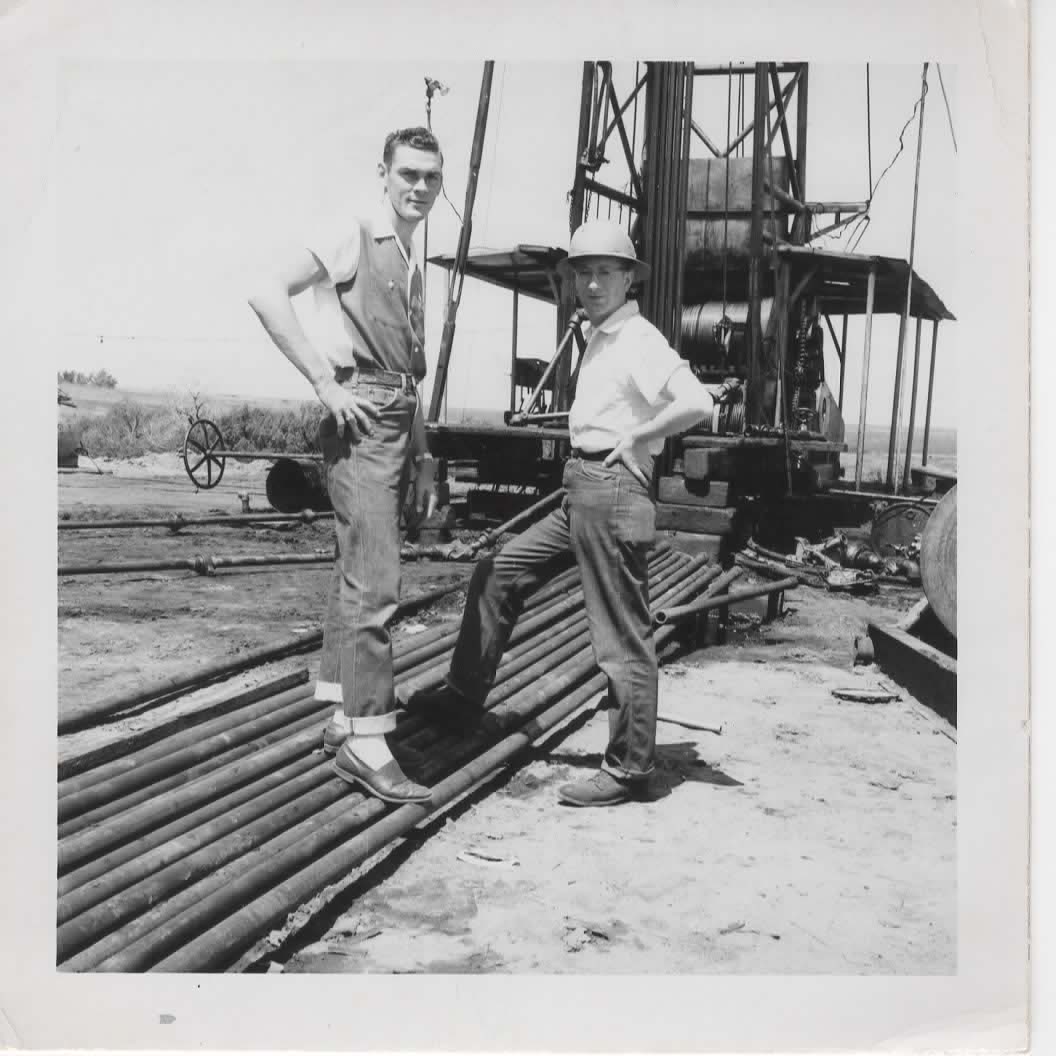
Until that time, scientists believed an intermediate in the decomposition of diacetyl peroxide, called the acetoxy radical, was so unstable that as soon as it was formed, it would decompose into carbon dioxide and an entity called the methyl radical. But, working with two other young chemists, Shine showed the acetoxy radical had a long enough life that it could be trapped by alkenes.
Once that was settled, Shine turned to another still-unanswered question: the benzidine rearrangement.
“When I got to Texas Tech, recalling my experience with the benzidine rearrangement in Ames, I decided I would take up the challenge to find out how it took place, and it took me years to really solve that problem,” Shine said. “To solve it, I had to learn to do mass spectrometry, which we couldn't do at Texas Tech in the early days because we didn't have an appropriate mass spectrometer, nor did we have a suitable scintillation counter for doing radioactive carbon work.”
Working with partners, A. N. Bourns of McMaster University in Canada, who did have a suitable mass spectrometer, and Clair Collins of Oak Ridge National Laboratory, who had the scintillation counter, Shine ultimately proved that in the presence of an acid, the two nitrogen atoms in hydrazobenzene parted at the same time as the two end carbon atoms of the benzene rings joined together, an occurrence called a concerted intramolecular rearrangement. Along the way, he learned how to do mass spectrometry and eventually won grant money to purchase Texas Tech's first quadrupole mass spectrometer.
“The benzidine rearrangement was so successfully solved it led me to study, by the same means, many other molecular rearrangements known to organic chemists,” Shine said. “I spent part of my life doing that.”
The Thianthrene Cation Radical
The history of his work on the benzidine rearrangement was later summarized in The Bulletin for the History of Chemistry. But it was in studying one of those other rearrangements that Shine made arguably his greatest discovery.
“Research is like that,” he noted. “You start doing something and you're led down an entirely different pathway.”
Because the benzidine rearrangement turns the molecule inside out when a nitrogen-nitrogen chemical bond breaks in the presence of acids, Shine suggested trying something similar with a different compound, diphenyl disulfide, in which two parts of the molecule are joined together by two sulfur atoms.
“Let's see if, in the presence of a strong acid, we can make that molecule turn inside out, so instead of being joined by two sulfur atoms, it will be joined by two carbon atoms and the sulfur atoms will be at the ends of the newly created molecule, one at each end,” Shine explained to a graduate student.
“When he tried that reaction, it was distressingly complicated,” Shine recalled. “If you dissolve diphenyl disulfide in concentrated sulfuric acid, you get the most beautifully purple-colored solution. And if you try to recover recognizable organic compounds from that, you fail – I was puzzled by this.”
The student was so frustrated that he quit his research with Shine and transferred to another professor, so Shine took up the challenge himself. He wanted to know why the purple solution was formed and why it gave such unrecognizable results.
“I was led to discover something called the thianthrene cation radical,” Shine explained.
In concentrated sulfuric acid, diphenyl disulfide is converted in part into a compound called thianthrene, which is then oxidized by the acid into a molecule that is positively charged – a cation – and has an unpaired electron – a radical. The name of that purple compound is the thianthrene cation radical.
“I became well-known for that,” Shine said, “and I started studying cation radical chemistry thereafter for years and years.”
Like the benzidine rearrangement, this research required instrumentation that Texas Tech didn't have – in this case, an electron spin spectrometer. So, with more grant funding from the U.S. Air Force's Office of Scientific Research, he purchased one, learned to use it and ultimately taught his students. The history of that discovery, Shine said, is recorded in the seminal 1998 book “Foundation of Modern EPR” by Gareth and Sandra Eaton and Kev Salikhov.
These early efforts were transformational, not only in the chemistry department, but also in organic chemistry as a whole.
“Professor Shine's pioneering work on the benzidine rearrangement reaction led synthetic chemists to make a variety of building blocks of chemical and biomedical importance,” said Guigen Li, a Horn Distinguished Professor in the Department of Chemistry & Biochemistry. “This reaction can result in high chemical yields and complete regioselective control, benefiting greener synthesis and production. Obviously, his groundwork showed a real-world impact and is still playing an important role in chemical synthesis today.
“His early research grants enabled the Department of Chemistry & Biochemistry to obtain its first quadrupole mass spectrometer and first electron spin spectrometer, two key instruments that have promoted research productivity and creativity in chemistry and materials science here at Texas Tech University. Professor Shine's research achievements accelerated the process of Texas Tech's transferring from a mainly teaching college to a tier-one research university.”
A Horn Distinguished Professor
So perhaps it was only natural that the university rewarded his efforts.
Each summer, Shine returned to England for chemistry meetings or lecture tours – and above all, to see his family still there. When he returned from his annual trip in 1968, Dennis told Shine he must report to the Board of Regents – then called the Board of Directors – on June 1, a Saturday morning.
“I knew something was in the wind from that,” Shine remembered. “Why would they want me to appear?”
To Shine's astonishment, he was named a Horn Professor, now known as a Horn Distinguished Professor, the highest academic honor Texas Tech can bestow. He was the first in his department; in the entire university, only four others were named before him. The inaugural class in 1967 consisted of Carl Hammer in classical and romance languages; Antarctic explorer Alton Wade in geology, Ernest Wallace in history and Elo J. Urbanovsky, namesake of Texas Tech's Urbanovsky Park, in park administration, horticulture and entomology.
While Shine was away, Dennis, the department head, nominated him. Without Shine's knowledge, Dennis read his publications to see whom he frequently quoted, then reached out to more than 20 of those people for recommendation letters. Dennis even searched Shine's office to find a photo of him. It's the same procedure Shine went through eight years later when nominating the department's next Horn Distinguished Professor, Pill-Soon Song. But Shine followed in Dennis' footsteps in more ways than just that.
After Grover Murray began as Texas Tech president in 1966, he decided department heads, previously an essentially lifetime appointment, would now become department chairs, reviewable by the dean of their respective college. Dennis, who had been a department head for 17 years, was not fond of the change. As he told Shine, “If I've got the responsibility, I want the authority” – and he didn't find the positions comparable. So, after two years as chair, Dennis resigned in 1969.
Shine replaced him.
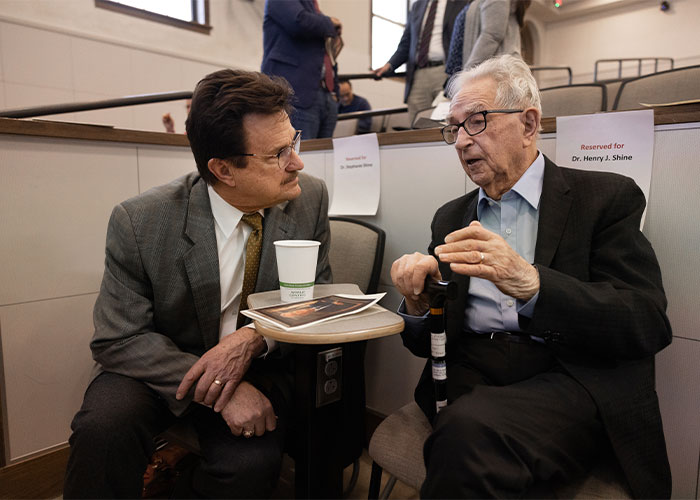
Challenges as Chair
As it turned out, Shine's term as department chair fell squarely during a transformational time for Texas Tech.
The university was working toward a medical school since the 1950s, and in 1969, it finally came to fruition. The Texas Tech University School of Medicine – which later grew into the Texas Tech University Health Sciences Center – was established by state law on Sept. 1, 1969, as its own university whose president and board were the same individuals who held those posts at Texas Tech.
“When the planning for the medical school was begun, I, as the chair of chemistry, was appointed as a consultant, meaning that I would attend the planning meetings and voice my advice and feelings,” Shine said.
Part of the initial plan for the medical school involved shared facilities between the School of Medicine and existing Texas Tech departments. So, Shine had to figure out how to accommodate the varying educational needs of students at both universities.
“The degrees in the sciences were supposed to be offered in Texas Tech, not the medical school,” Shine explained. “There were to be science departments in the medical school, such as biochemistry, physiology, etc., but the classes were to be offered on the main campus. The School of Medicine was planned to be unlike traditional medical schools, but that plan was completely disregarded by the faculty who were first appointed to it; they wanted a traditional medical school.
“Insofar as biochemistry was concerned, in the School of Medicine, there was no interest whatsoever in having classes taught in the chemistry department of Texas Tech. So, we were asked by President Murray and the Graduate Dean Knox Jones to try to fashion a curriculum that suited the medical school but was based on a degree to be granted in the chemistry department.”
Shine tapped two biochemists in the department to work with the School of Medicine's biochemists to settle on a common curriculum, but no satisfactory agreement could be reached.
An exacerbating factor was space as Shine tried to balance the research needs of both his own department and the science departments of the medical school. A recent addition to the Chemistry building had created extra laboratory space, but the facilities were unfinished. Money had run out, leaving a number of research laboratories partly furnished.
“I told Dr. Murray more space would be available if we had the money to furnish those unfinished research labs,” Shine recalled. “He gave us the money, about $100,000, taking it from the medical school budget. That solved the space problem but was not pleasing financially to the dean of the medical school.”
Ultimately, there were just too many points of contention, and the only solution was the complete academic separation of the chemistry and other Texas Tech departments from the School of Medicine's science departments – which eventually happened.
“We must have all been pretty stubborn in those days certainly,” Shine said. “As for the School of Medicine, I felt then that they had betrayed the original planners of a nontraditional medical school.
“I look back in regret at not achieving a sensible pathway more quickly. If I had been a wiser man then, we may have achieved an amicable solution sooner. As it happens, history has shown that the original concept was idealistic and unworkable. Change was inevitable and has been a tremendous success. The medical school has become a phenomenal development, not only in its clinical but also in its science departments, particularly its Department of Cell Biology & Biochemistry.”
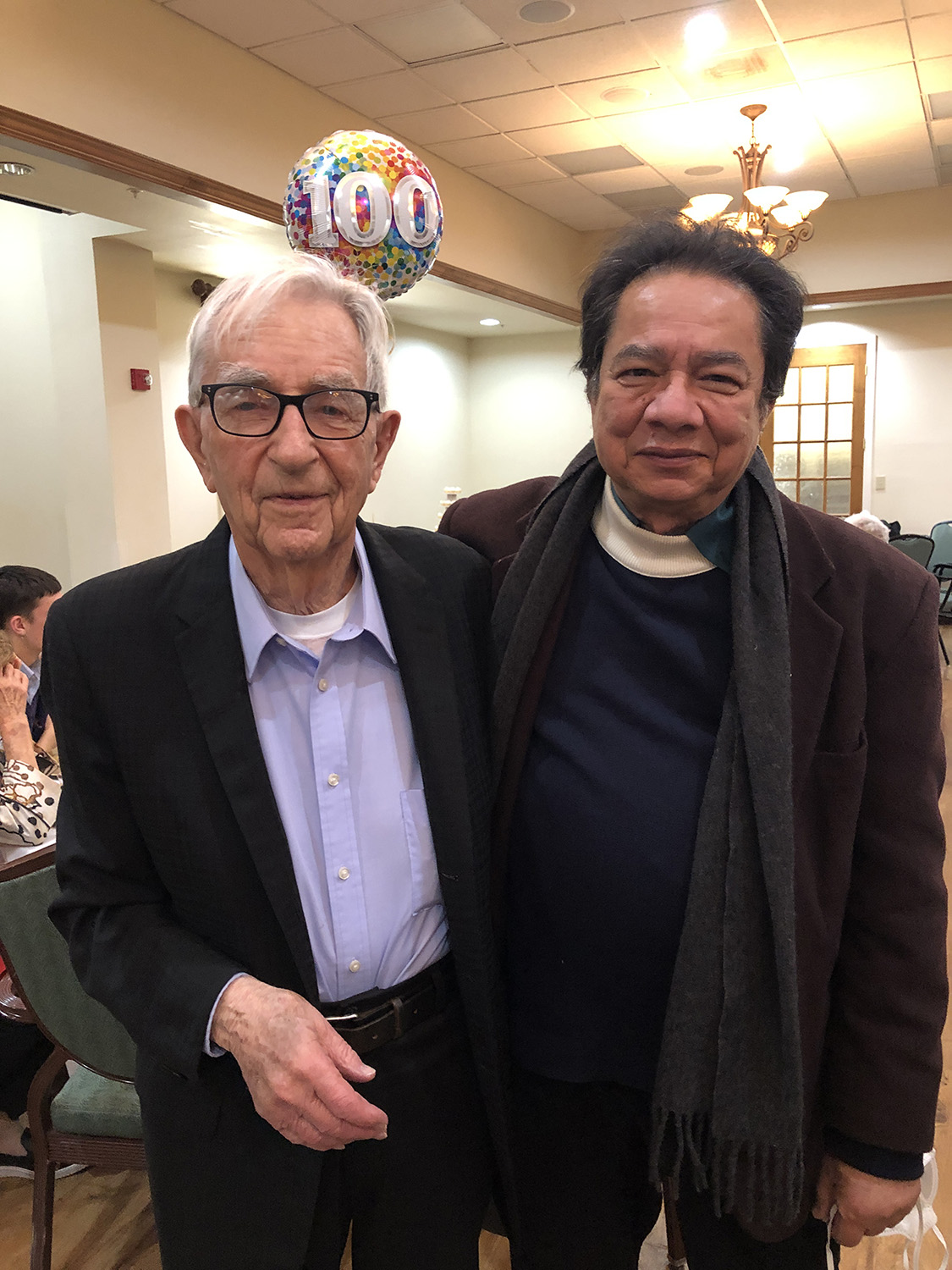
The Battle Over Tenure
After six years of departmental administration, during which his own research was forced to take a back seat, Shine resigned as chair in 1975. He went back to what he probably thought would be a quieter life, conducting his own research and teaching students.
But in the early years of the next decade, another pivotal moment in university history disrupted the peace. The matter was faculty tenure.
It began in March 1981, when the five-member Faculty Tenure & Privilege Committee resigned over a matter in which the upper administration had failed to exercise what the committee considered due process. In the early months of 1984, a draft of a new tenure policy was devised by President Lauro Cavazos and placed before the faculty. The draft caused a storm of protest.
To properly appreciate the events of that time, it is necessary to understand how the concept of tenure had been achieved.
“When I joined Texas Technological College in 1954, there was no such thing as tenure, and there was no drive in Texas Tech toward it,” Shine said. “But, in 1957, I think, the Board of Directors voted not to renew the contracts of three members of the faculty. The members were Herb Greenberg, Per Stensland and Byron Abernethy. They learned of their dismissal in the Sunday newspaper. Because of that, Texas Tech was placed on a blacklist by the American Association of University Professors for something like 10 years.
“When Grover Murray was offered the presidency of Texas Tech, he made getting off the blacklist and tenure conditions of acceptance, as well as accommodating the three who had been fired.
“Thus, tenure became a hard-won concept for the faculty, and to change the tenure policy inappropriately in 1984 was unacceptable to them.”
One criticism of the policy was the notion that a young faculty member could work hard, achieve tenure – essentially securing a lifetime appointment – then coast for the remainder of their career. It's something that probably happened occasionally, the faculty felt, but it was not common and certainly not a sufficient reason to discontinue tenure altogether.
So, as the faculty pushed back, they saw Cavazos' stance as a betrayal. William Mayer-Oakes, then the chair of the Faculty Senate, asked Shine to speak at a large faculty gathering in September 1984 and propose a motion calling for a mail ballot of the voting faculty as to whether or not the faculty had confidence in Cavazos. The motion was passed with no opposition.
“His reason for asking me, I think, was that I was then the senior Horn Professor,” Shine said.
But Shine also had other qualities Mayer-Oakes probably recognized.
“Henry Shine got up and gave an impassioned argument against the new policy,” remembered Gary Elbow, a retired geography professor and former associate vice provost. “Henry was not the sort of person who would get into a brawl like that if he didn't feel very strongly about it, and he is a very highly principled sort of guy and extremely articulate, so when he gets up and condemns something, you know it's been condemned.”
The mail ballot with the motion expressing no confidence in Cavazos was indeed placed before the voting faculty and was passed overwhelmingly.
“Afterwards, I felt very much lost, as if we had taken a most unusual step,” Shine said. “I remember saying to the faculty that it was the most somber occasion of my life at Texas Tech.”
Continuing Education
Fortunately, most of Shine's career memories are highlights – moments of success in the classroom and the laboratory. As you might expect, he received numerous recognitions for both teaching and research.
Shine was awarded the Faculty Research Award in 1982, the Texas Tech Dads Association Distinguished Faculty Research Award in 1983, the President's Academic Achievement Award in 1991 and the Faculty Distinguished Leadership Award in 1994 from the Texas Tech Dads and Moms Association, now known as the Texas Tech Parents Association.
In 1986, he received a Senior Distinguished U.S. Scientist Award from the Alexander von Humboldt Foundation, enabling Shine and his wife to spend a year in Germany with a position at the University of Hamburg. The American Chemical Society's Division of Organic Chemistry listed Shine among the 300 famous organic chemists who contributed to the fundamentals of organic chemistry. He taught student after student who went on to their own auspicious careers, some in industry, some in academia.
In 1998, in honor of Shine's 75th birthday, a group of donors created an endowed lectureship series in his name. It has thrived, bringing to the campus an impressive set of speakers over the last two decades.
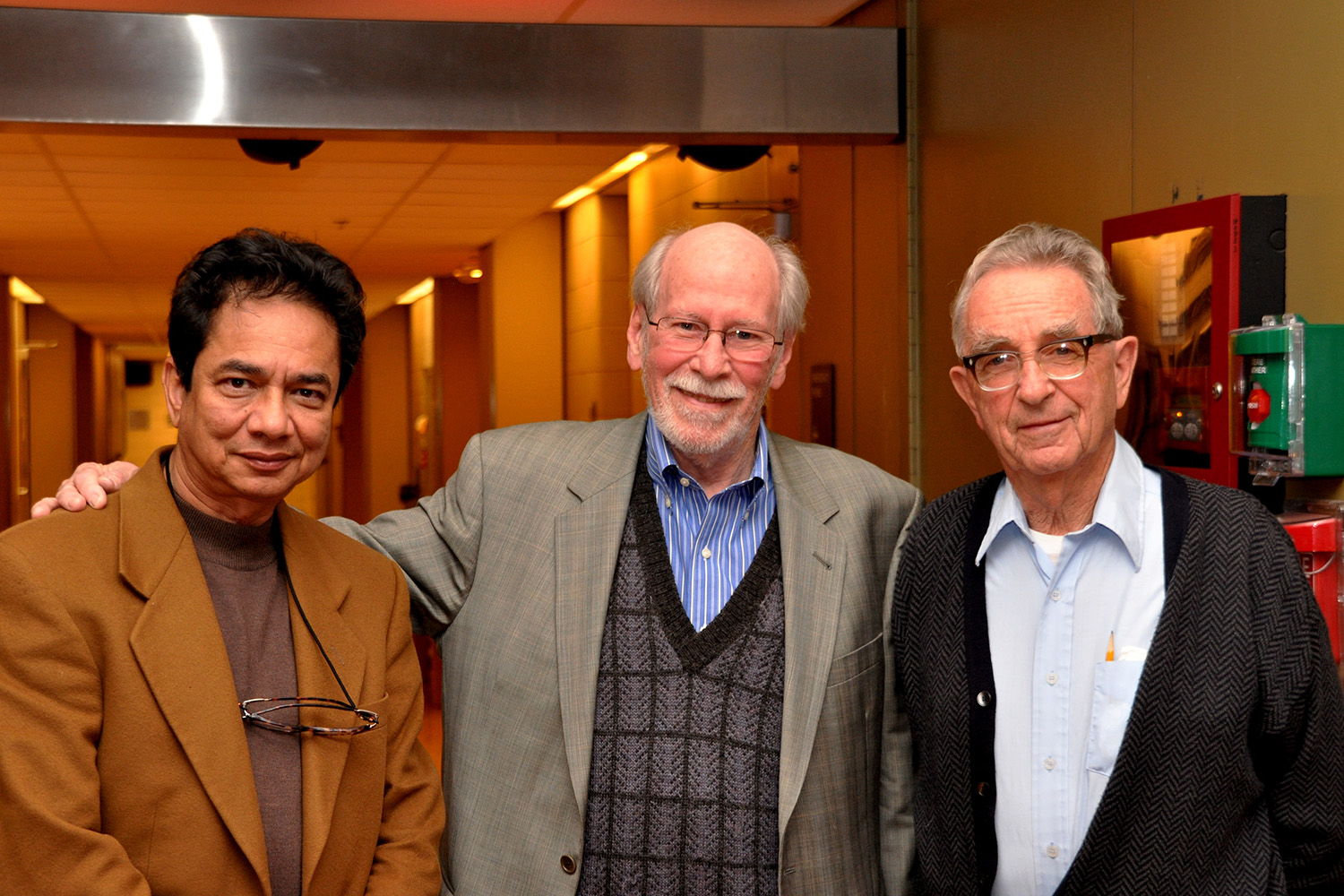
But, nearing 75, Shine was beginning to feel his age. In the fall of 1996, he decreased his teaching load to only one class per semester, and three years later, retired from the classroom altogether. Then designated a Horn Professor Emeritus and Research Professor, Shine continued his research in cation radical chemistry another 12 years, still supported by grants from external sources. The Robert A. Welch Foundation continuously funded Shine's work from 1955 until he closed his laboratory and relinquished his Welch grant in 2008.
Even without teaching, however, he wasn't devoting all of his time to research. Shine began another project: documenting the history and evolution of the chemistry department. It made sense, as he'd personally witnessed so much of it and knew many of the individuals who could speak to other parts.
He conducted meticulous research in the Southwest Collection/Special Collections Library. He wrote about the development of the undergraduate and graduate programs, the research of Texas Tech chemists and the department's classified personnel – the individuals doing clerical and technical work, whom he regards as the unsung heroes. He read and summarized the significant scholarship of researchers in the department's six divisions: analytical chemistry, biochemistry, chemical education, inorganic chemistry, organic chemistry, and physical chemistry.
“I have finished, but it has taken me years,” Shine said.
In his office in the Chemistry building, atop his desk, now sit two sizeable stacks of papers – the transcripts of everything he's written. One is for the Southwest Collection, which already houses 39 boxes of materials Shine donated from his career. The other stack is for his children: Trevor, who lives in England, and Stephanie, executive director of Texas Tech's Center for Early Head Start.
Why keep all that material? Because it has the ability to help educate others, even if they don't come looking for it until decades from now. By telling the story of our past, he has helped us plan for the future – and when you really look at it, that's the overarching theme of Shine's life.
A child who knew nothing of education discovered a love for it, a love of discovery itself, and dedicated the rest of his life to furthering knowledge however he could.
“Henry was one of the first highly research-active faculty and has continued to be so throughout his multi-decade career,” said Dimitri Pappas, chair of the Department of Chemistry & Biochemistry. “He was winding down his research when I started my career in 2005, but even then, Henry was a force in the department. When he spoke, we listened, because Henry helped build this department into what it is today. He is the living embodiment of the phrase, ‘From Here, It's Possible.'”
It seems natural that, even in retirement, Shine hasn't stopped helping others learn. The funds he still receives as a Horn professor are now used to support graduate students every summer.
“It's just another example of Henry putting the department, and our students, first,” Pappas said.
Shine has given more than 65 years of his life to this university. Asked why he continues to do so, he's reflective.
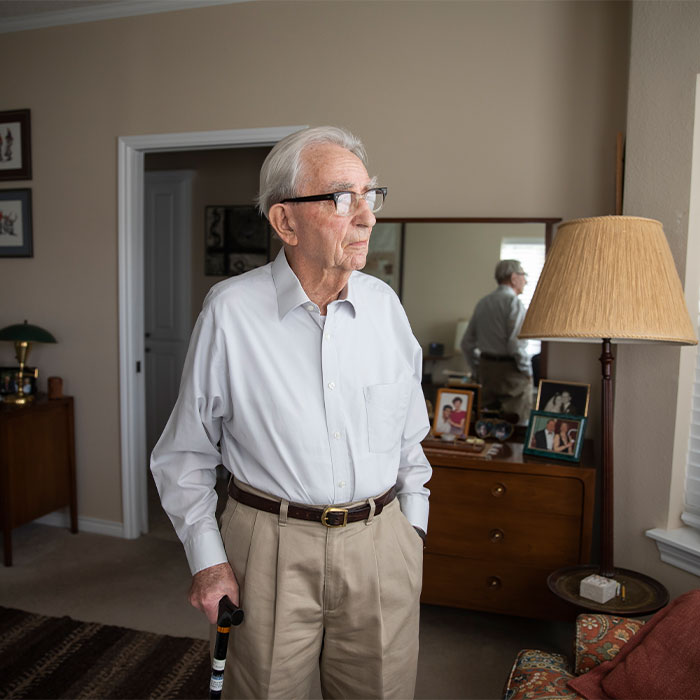
“Well, Texas Tech has been very good to me, and I have, I think, been of some help to Texas Tech,” he said. “I'm still part of the Texas Tech community. It keeps me going, and I retain an interest in everything that goes on at Texas Tech.
“I expect to do so for the rest of my life.”

